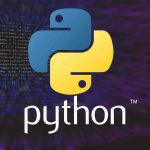-

-
Face Recognition with TensorFlow in Python: A Guide for Data Scientists
2024/5/15
Table of Contents Introduction to Face RecognitionKey ConceptsWhy TensorFlow?Convolutional Neural Networks (CNNs)Key Components of CNNsFace Recognition ProcedureStep-by-Step ImplementationStep 1: Data PreparationStep 2: Building the CNN ModelStep 3: Training the ModelStep 4: Evaluating the ModelStep 5: Face RecognitionPlotting the Training HistoryOutput of the CodeConclusion Hey there, tech experts! Whether you're a digital nomad traveling the world, a programmer looking to dive into machine learning, or a data scientist aiming to expand your skill set, this guide is for you. Today, we’re going to explore face recognition using TensorFlow in Python. We'll delve into the face recognition method, the procedural steps, and ...
-

-
Unveiling the Power of Bootstrap Resampling in Python: A Guide for Nomad Data Scientists
2024/5/15
Table of Contents What is Bootstrap Resampling?Why Use Bootstrap?The Bootstrap ProcedureConfidence Intervals with BootstrapExample: Bootstrap Resampling in PythonSetting UpBootstrap Resampling CodeExplanation of the CodeOutput of the CodeBootstrap in Machine Learning: BaggingWhat is Bagging?Example: Bagging with Decision TreesSetting UpBagging CodeExplanation of the CodeOutput of the CodeConclusion Hey there, digital nomads, programmers, and data scientists! Today, we're going to dive deep into the fascinating world of statistics and explore the bootstrap resampling method. Whether you're programming on the go, analyzing data from a cozy café, or crunching numbers in a shared workspace, understanding bootstrap resampling will arm you with powerful tools to ...
-

-
Exploring Statistical Distributions in Python: A Data Scientist's Guide
2024/5/21
Table of Contents Gaussian (Normal) DistributionCharacteristics of the Gaussian DistributionPlotting the Gaussian DistributionPoisson DistributionCharacteristics of the Poisson DistributionPlotting the Poisson DistributionBinomial DistributionCharacteristics of the Binomial DistributionPlotting the Binomial DistributionStudent's t-DistributionCharacteristics of the Student's t-DistributionPlotting the Student's t-DistributionChi-Square DistributionCharacteristics of the Chi-Square DistributionPlotting the Chi-Square DistributionConclusion Hey there, data scientists and Python programmers! Whether you're diving into data science or just brushing up on your statistical knowledge, understanding distributions is crucial. Distributions help us describe the variability in data, make predictions, and understand patterns. Today, we'll delve into some fundamental statistical distributions, namely the Gaussian, Poisson, Binomial, Student's t, and Chi-Square ...
-

-
Python Programming and Random Numbers for Beginners
2024/5/21
Table of Contents Why Random Numbers?Setting Up Your Python EnvironmentGenerating Random Numbers in PythonThe Random ModuleUsing NumPy for Random NumbersUnderstanding DistributionsUniform DistributionNormal DistributionSetting UpThe CodeHow It WorksPractical ApplicationsDice Roll SimulationMonte Carlo SimulationConclusion Hey there! So, you're interested in Python and its capabilities with random numbers? Whether you're a budding programmer, a digital nomad looking to add some statistical tools to your belt, or a data scientist in the making, understanding how to handle randomness in Python is a skill worth having. Today, we're diving deep into the world of Python programming with a focus on generating random numbers, understanding different ...
-

-
Mastering the Twitter (X) API with Python: A Data Collection Guide for Nomad Programmers, and Data Scientists
2024/5/23
For digital nomads, programmers, and data scientists, utilizing the power of the Twitter (X) API can open up a world of possibilities, from searching users to trend tracking. This guide will explore the Twitter (X) API, demonstrate how to use it with Python, and discuss its limitations and practical applications. Table of Contents Introduction to the Twitter (X) APIWhat is the Twitter (X) API?Why Use the Twitter (X) API?Setting Up the Twitter (X) APIPrerequisitesCreating a Twitter Developer AccountInstalling Required LibrariesUsing the Twitter (X) API with PythonAuthenticating with the APIFetching TweetsFetching User Profile InformationStreaming Tweets in Real-TimeUnderstanding API LimitsRate LimitsHandling Rate ...
-

-
Mastering Python Pandas: Aggregating DataFrames
2024/5/12
Table of Contents Getting Started with PandasBasic DataFrame OperationsMean and MedianSorting DataFramesCumulative StatisticsDropping Columns and RowsCreating SubsetsAdvanced DataFrame OperationsGrouping DataPivoting DataWhy Use Pandas for Data Aggregation?Real-world ApplicationConclusion Hello, data enthusiasts! If you're diving into the world of Python and its powerful library Pandas, especially if you're a budding data scientist, you're in the right place. Today, we're focusing on aggregation—how you can summarize, transform, and extract insights from your data efficiently. Getting Started with Pandas Before we dive into the thick of things, ensure you have Pandas installed. If not, a quick run of pip install pandas in your command ...
-

-
Python Pandas and Data Manipulation for Beginners
2024/5/11
Table of Contents What Is Pandas?Getting Pandas Up and RunningYour First Steps in PandasCreating a DataFrameReading and Writing DataBasic Data ManipulationAdvanced Data HandlingDealing with Missing DataGrouping and AggregationMerging and JoiningVisualizing DataTips for Becoming a Pandas ProConclusion Hello there! If you've just embarked on your journey into the world of data science, or you're a seasoned coder looking to get up to speed with data manipulation in Python, this article is your go-to resource. Today, we're diving deep into the realm of Pandas, Python's powerhouse library, that makes data manipulation a breeze. By the end of this guide, you'll not only ...
-

-
Harnessing Selenium and Python for Google Image Scraping: A Digital Nomad's Toolkit
2024/5/12
Table of Contents Why Use Selenium for Google Image Scraping?Setting Up Your EnvironmentInstallation:Crafting the ScraperThe Python ScriptExplanation of the ScriptConsiderations for the Digital NomadConclusion In the dynamic world of data science, the ability to harness and curate custom datasets is invaluable, especially for digital nomads who often switch from one location to another, bringing their work wherever they go. Using Python and Selenium to scrape Google Images provides a flexible solution for creating tailored datasets essential for various analytical needs. Here's a deep dive into how you can utilize these tools to streamline your data collection process. Why Use Selenium ...
